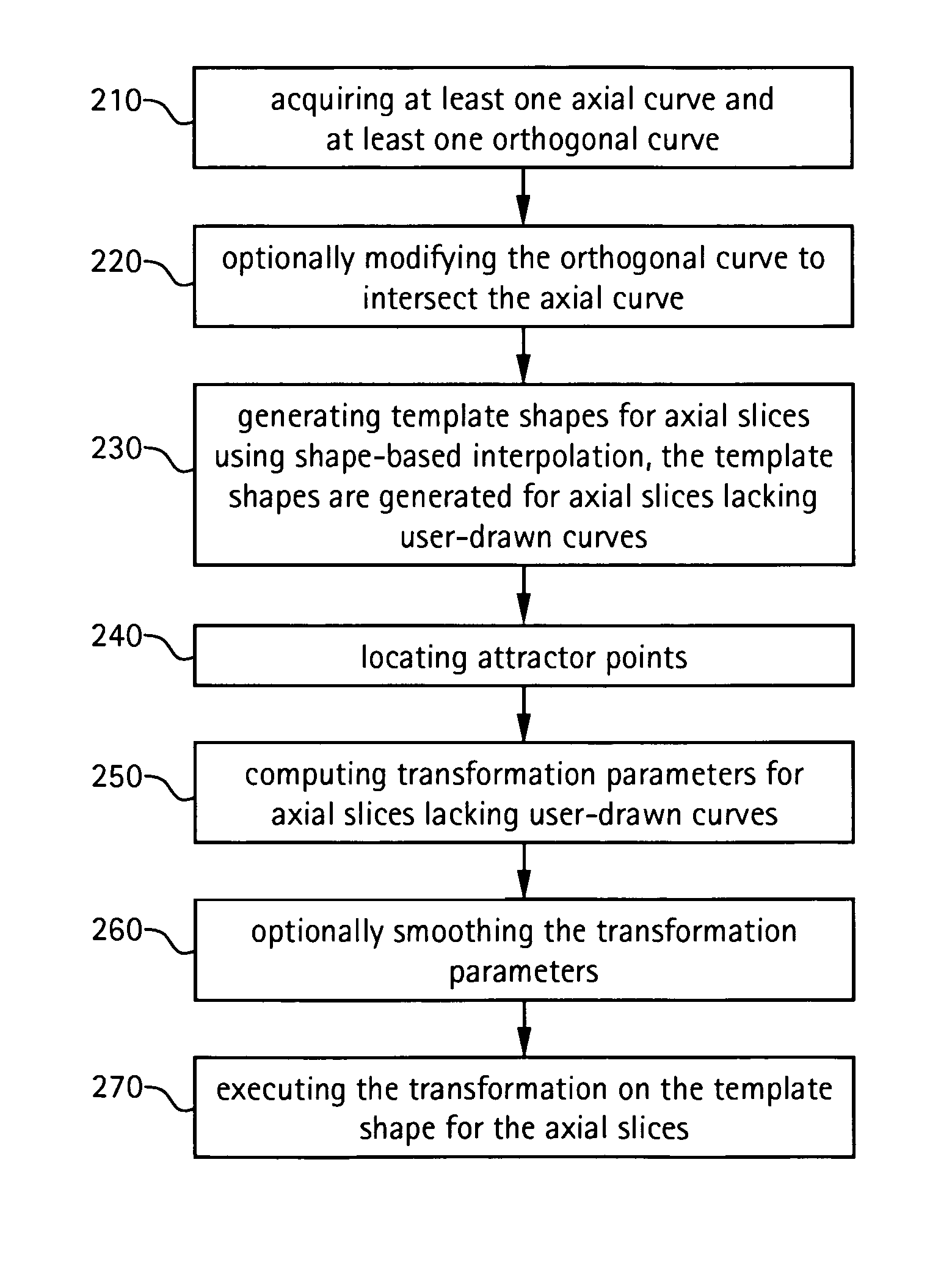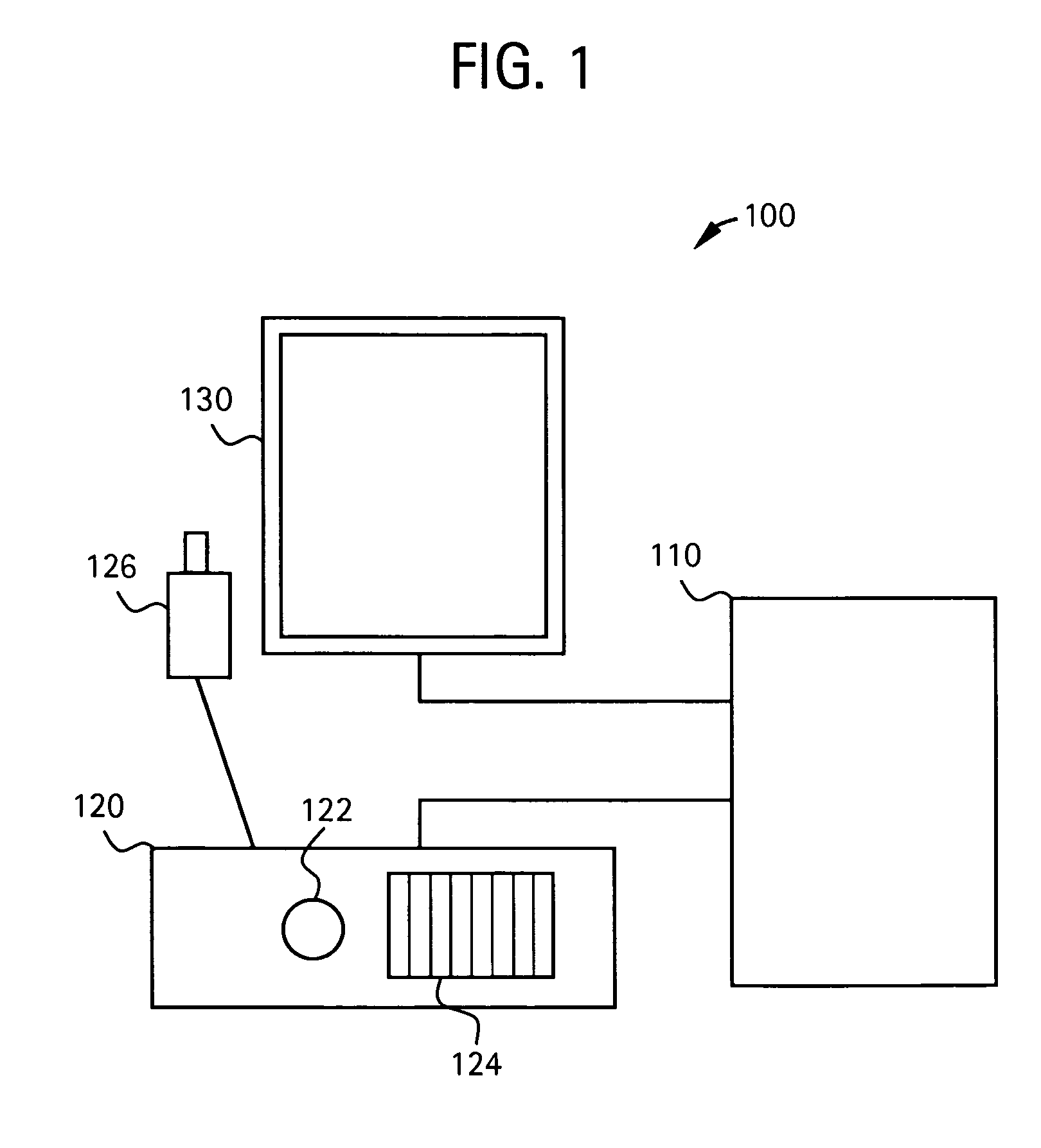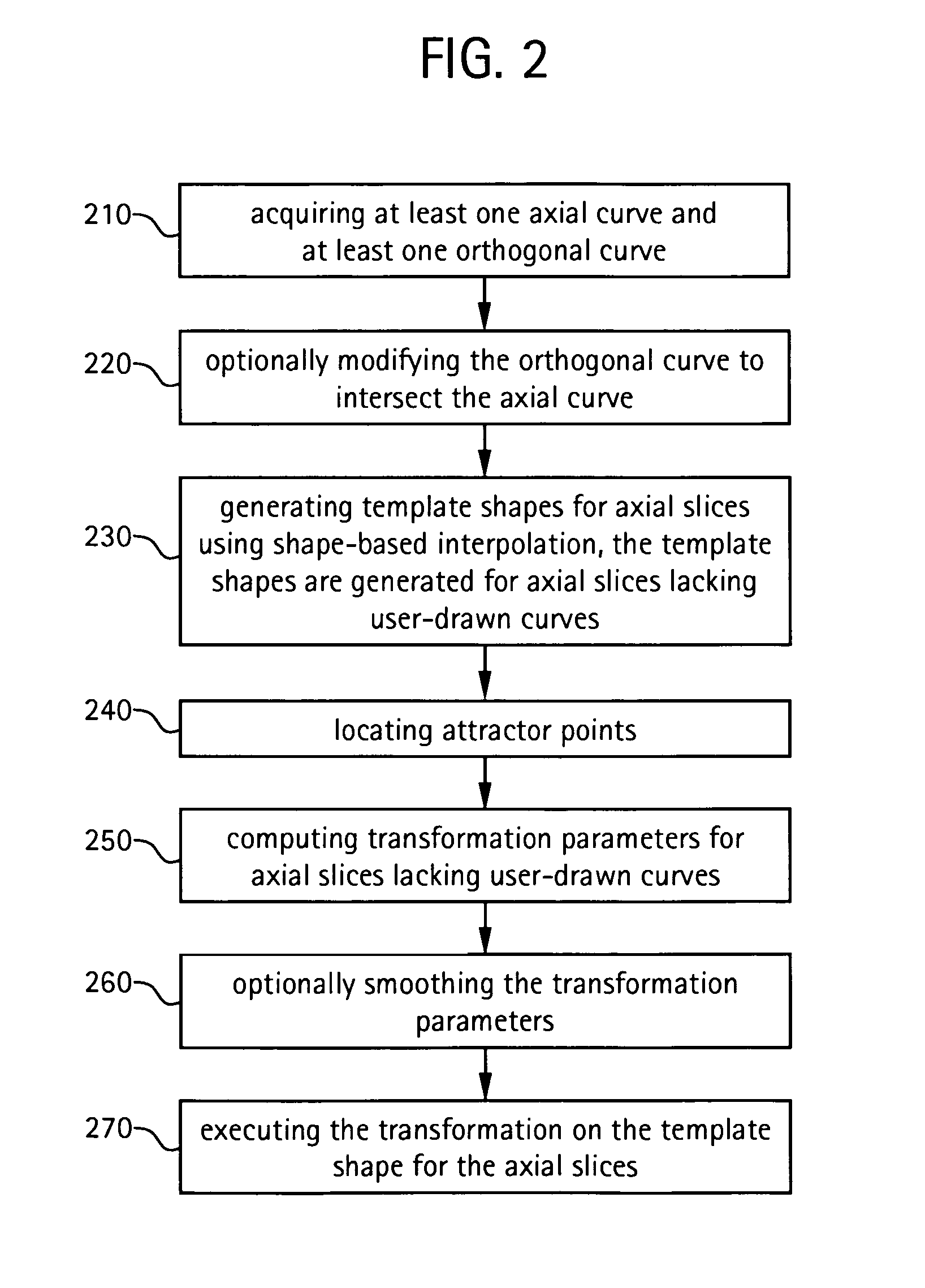Method and apparatus for three-dimensional interactive tools for semi-automatic segmentation and editing of image objects
a semi-automatic, image object technology, applied in the field of three-dimensional interactive tools, can solve the problems of time-consuming and laborious manual segmentation process, inability to detect internal defects in objects, and complex anatomical segmentation process,
- Summary
- Abstract
- Description
- Claims
- Application Information
AI Technical Summary
Benefits of technology
Problems solved by technology
Method used
Image
Examples
Embodiment Construction
[0028]FIG. 1 illustrates a system 100 for controlling the display and segmentation of medical images. The system 100 includes a computer unit 110. The computer unit 110 may be any equipment or software that permits electronic medical images, such as x-rays, ultrasound, CT, MRI, EBT, MR, or nuclear medicine for example, to be electronically acquired, stored, or transmitted for viewing and operation. The computer unit 110 may be connected to other devices as part of an electronic network.
[0029]The system 100 also includes an input unit 120. The input unit 120 may be a console having a track ball 122 and keyboard 124. The input unit 120 may also have a tracing pen 126. Other input devices may be used to receive input from a user as part of the input unit 120. For example a microphone may be used to receive verbal input from a user. The tracing pen 126 may communicate with the input unit 120 through a wire. The tracing pen 126 may also communicate with the input unit 120 in a wireless f...
PUM
 Login to View More
Login to View More Abstract
Description
Claims
Application Information
 Login to View More
Login to View More - R&D
- Intellectual Property
- Life Sciences
- Materials
- Tech Scout
- Unparalleled Data Quality
- Higher Quality Content
- 60% Fewer Hallucinations
Browse by: Latest US Patents, China's latest patents, Technical Efficacy Thesaurus, Application Domain, Technology Topic, Popular Technical Reports.
© 2025 PatSnap. All rights reserved.Legal|Privacy policy|Modern Slavery Act Transparency Statement|Sitemap|About US| Contact US: help@patsnap.com



